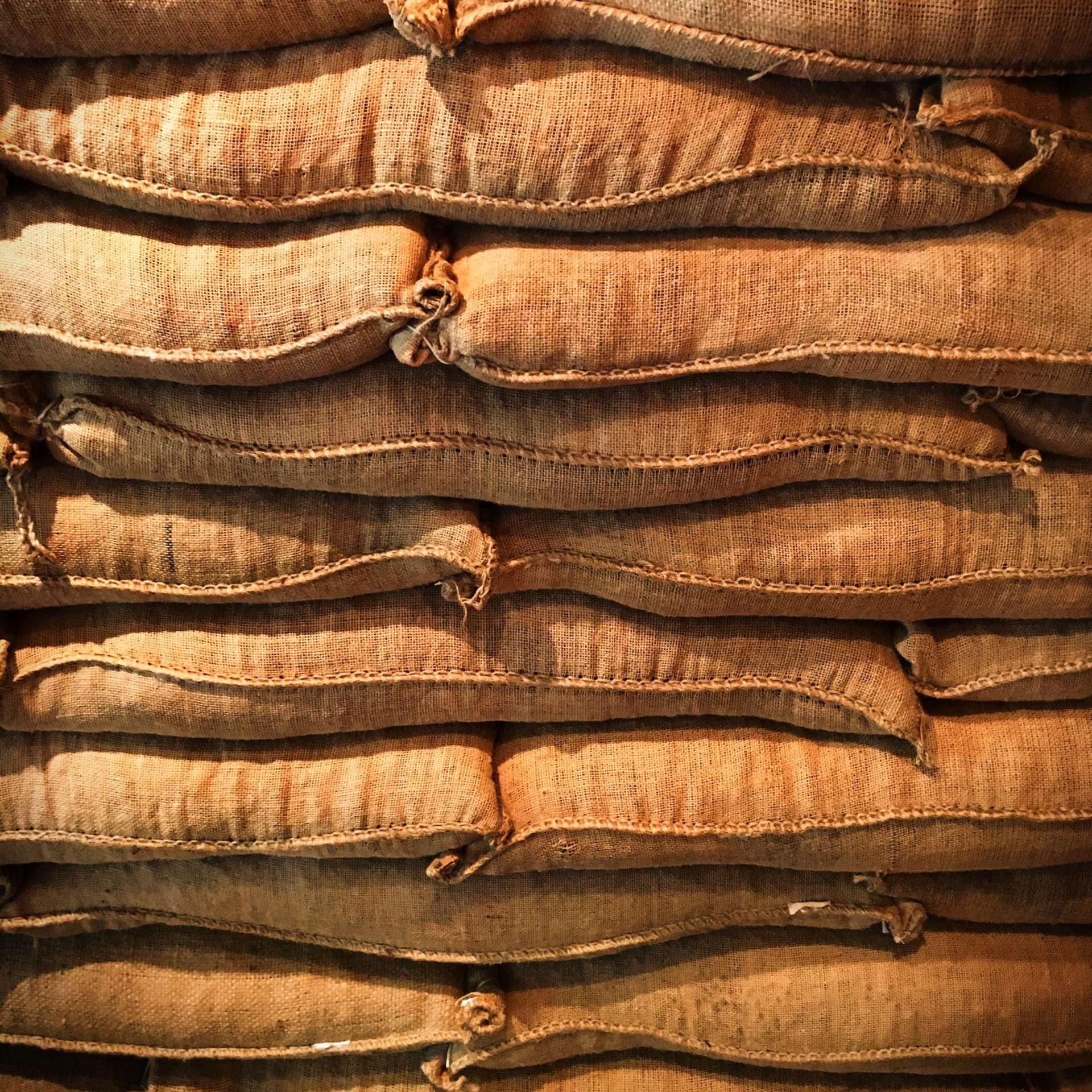When we reflect on the most iconic countries in coffee production, Yemeni coffee beans may not be the first that comes to mind. However, this small country harbors a deep and significant connection with the history of coffee, which is a fundamental pillar in global coffee culture. Although the botanical origins of the coffee tree lie in Ethiopia, it was in Yemen where the coffee drink, as we know it today, began its historic journey. This article explores Yemen’s rich history of coffee production, its traditional growing practices, and the distinctive flavor profiles of its beans, tracing the journey from ancient farming terraces to the modern cup of coffee.

Emerging from the rugged mountains and arid landscapes of Yemen, Yemeni coffee tells a story of resilience and tradition.
Yemeni Coffee Beans History
Coffee beans are believed to have been first consumed as a beverage in western Yemen around 1450 by the country’s Sufi monks, who used them to stay awake during their nighttime meditations. This initial use of coffee marked the beginning of the world’s coffee-drinking culture as we know it today. Yemen’s prosperity grew as coffee spread globally. By the beginning of the 18th century, much of the country’s income came from coffee exports, and Yemen was the leading grain supplier worldwide.
This boom led many Yemeni farmers to dedicate themselves to coffee cultivation, a tradition that has sometimes been handed down for hundreds of years, going back four or five centuries.
With the rising global demand for coffee, colonial powers such as the Dutch, French, and British East India Companies began smuggling coffee beans from Yemen to grow in their colonies. Using forced cultivation systems, these new competitors started to produce and export their coffee. As a result, Yemeni coffee, unable to compete with these cheaper coffees and needing more differentiation based on quality, saw its market share drastically reduced. At the end of the 18th century, Yemen produced only 6% of the world’s coffee; today, that figure is less than 0.1%.
Mokha
The term “Mokha” originates from the port of Al-Makha, located on the coast of Yemen, and has a deep connection with the history of coffee. In the 15th and 16th centuries, Al-Makha became a crucial export point for Yemen-grown coffee beans. These beans were known for their exceptional quality and distinctive flavor, which included earthy, chocolatey, and slightly vinous notes. The reputation of Al-Makha coffee beans spread throughout Europe and Asia, and the name “Mokha” became synonymous with these high-quality beans.
Throughout history, the term “Mokha” has remained a symbol of Yemeni coffee beans and their legacy in global coffee culture. Although the name may cause some confusion today due to its similarity to the coffee drink “mocha,” it is essential to remember that “Mokha” refers to the geographical region and coffee beans that have a special place in history and the coffee trade.
Cultivation in Yemen
Coffee cultivation in Yemen, situated in a challenging and unique environment, is marked by the scarcity of fertile land and the limitation of the most vital resource: water. In response to these challenges, Yemeni farmers have perfected the art of growing coffee on terraced terraces along the rugged mountains. This technique is an ingenious solution to the limitation of the terrain and allows efficient use of water in a predominantly arid climate.
The diversity of Arabica coffee varieties in Yemen directly results from its unique geography and traditional agricultural practices. The lack of large-scale fertilization and the remoteness of the growing regions have allowed each area to develop distinctive characteristics in its coffee beans. Grown in different microclimates and altitudes, these beans present a variety of flavor profiles, making them exceptionally prized in the world of coffee.
Harvesting and Processing
Coffee harvesting in Yemen is a manual process that has remained unchanged for centuries. Farmers meticulously pick the beans by hand, selecting the ripe cherries, a technique that reflects their commitment to quality and preserves ancient traditions.
After harvesting, the cherries are dried in the sun, generally on the roofs of houses. This drying method takes advantage of Yemen’s arid climate and is crucial to developing Yemeni coffee beans’ characteristic flavor and aroma.
Flavor Profiles

Yemen coffee beans stand out for their astonishing diversity of flavor profiles, defying any attempts at simplistic categorization. This richness and variability is due to the wide range of microclimates, the genetic diversity of coffee plants, and the cultivation techniques transmitted over centuries. Each cup of Yemeni coffee is a sensory exploration, similar to walking the complex wheel of coffee flavors.
notable coffees in Yemen
Yemen’s top coffees feature lively, complex acidity, adorned with subtle floral notes, candied fruits, citrus and wild berries, hints of dark chocolate, and a distinctive wine character. This rich and multidimensional flavor profile offers an exceptional taste experience, where the fragrance and aromas are intensely enveloping. These unique characteristics reflect the uniqueness of the Yemeni terroir, offering coffee lovers a heavenly and memorable experience with every sip.
Coffee Producing Regions

With its diverse topographical profile, Yemen offers a unique range of microclimates ideal for coffee production. Each region contributes something unique to its coffee varieties, from extreme desert plains to volcanic mountain ranges.
Sana’a
Altitude: 1500-2200m
Harvest: October-December
Varieties: Traditional varieties such as Mattari, Ismaili, Harazi, Dawairi, Dawarani, Sanani, Haimi
In the Sana’a region, located in the high mountains of central Yemen, exceptional coffee beans are cultivated. Here, the elevated altitudes and cool temperatures contribute to a coffee bean with a complex and nuanced flavor profile. Coffees from Sana’a are known for their floral notes and bright acidity, reflecting the region’s high altitude.
Raymah
Harvest: October-December
Altitude: Average 1850 m
Varieties: traditional varieties such as Raymi, Dwairi, Bura’ae, Kubari, Tufahi, Udaini
Raymah, with its valleys and mountainous terraces, offers ideal conditions for superior-quality coffee. The coffee beans from this region are prized for their medium body and balanced flavors, often with hints of fruit and spice. The unique combination of fertile soil and varied microclimates in Raymah results in a coffee with a distinctive character.
Mahweet
Altitude: 1500-2100m
Harvest: October-December
Varieties: Traditional varieties like Mahwaiti, Tufahi, Udaini, Kholani
The Mahweet region, renowned for its mountainous landscapes and rich cultural heritage, produces coffee with flavor profiles deeply rooted in its natural environment. The beans from Mahweet are characterized by their natural sweetness and caramel notes, reflecting the region’s milder climate conditions and rich soils.
Sa’dah
Altitude: Average 1800 m
Harvest: October-December
Varieties: Traditional varieties like Dawairi, Tufahi, Udaini, Kholani
In Sa’dah, the growing conditions are unique due to its extreme elevations and varied climate. Coffees from this region are notable for their intensity and complexity, with a whole body and flavors that can include hints of dried fruits and chocolate. The challenging terrain of Sa’dah contributes to its coffee’s robust and rich characteristics.
Hajjah
Altitude: 1600-1800m
Harvest: October-December
Varieties: traditional varieties such as Shani, Safi, Masrahi, Shami, Bazi, Mathani, Jua’ari
Located in northwest Yemen, the Hajjah region is distinguished by its rugged terrain and varied microclimates, which play a crucial role in the uniqueness of its coffee. Coffee from this area is renowned for its robust body and complex flavor profiles, often characterized by a mix of fruity and spicy notes. Coffee growing in Hajjah benefits from the region’s high altitude and traditional agricultural practices, which have been maintained over generations, contributing to the exceptional quality of the coffee produced there. These elements combined position Hajjah as a significant contributor to Yemen’s rich coffee heritage.
Each of these regions, with its specific geographical and climatic features, contributes to the diverse flavor palette of Yemeni coffee, making it one of the most unique and sought-after in the world of coffee.
The Cultural Significance of Yemeni Coffee
Yemeni coffee is more than a beverage; it’s a cultural emblem. The coffee-drinking ceremonies in Yemen are steeped in tradition, reflecting the country’s rich heritage and social customs. These ceremonies, often elaborate and hospitable, showcase the deep-rooted significance of coffee in Yemeni culture.
Traditional Coffee From Yemen (Yemeni spiced cascara coffee)
Yemeni Spiced Cascara Coffee is a unique and delicious coffee drink that combines coffee husk with aromatic spices and traditional Yemeni flavors. The coffee husk is the coffee seed’s outer layer surrounding the coffee bean. In Yemen, a tradition has developed of using coffee husks creatively, taking advantage of their distinctive flavor and aroma.
To prepare this drink, start with the coffee husk, dried in the sun and gently roasted. Cinnamon, cardamom, cloves, and ginger are added to infuse a rich flavor and aroma. The mixture is simmered, allowing the flavors to blend and intensify.
The result is a cup of cascara coffee with a touch of Yemen’s characteristic spices and flavors. This drink is appreciated for its complexity of flavor, which includes earthy, spicy notes and a slight sweetness from spices. It is a unique experience reflecting Yemen’s rich coffee heritage and love of aromatic spices.
Conclusion
Yemeni coffee offers a unique window into a world of rich history, diverse flavors, and enduring traditions. For connoisseurs and newcomers alike, Yemeni coffee beans provide not just a cup of coffee but a taste of a centuries-old legacy that continues to captivate coffee enthusiasts around the globe.
Frequently Ask Questions About Coffee Bean Yemeni
What is unique about Yemen coffee?
– Yemeni coffee is unique for its historical significance as one of the earliest coffee-producing regions, with traditional cultivation methods and a distinctive flavor profile characterized by earthy, spicy, and fruity notes.
Is Yemeni coffee arabica or robusta?
– Yemeni coffee is predominantly arabica, known for its high-quality arabica beans. Robust coffee is rare in Yemen.
Is Yemeni coffee the best in the world?
– coffee connoisseurs regard Yemeni coffee for its unique flavors, but whether it’s the “best” in the world is subjective. Yemeni coffee holds a special place in the world of coffee due to its history and flavor diversity.
